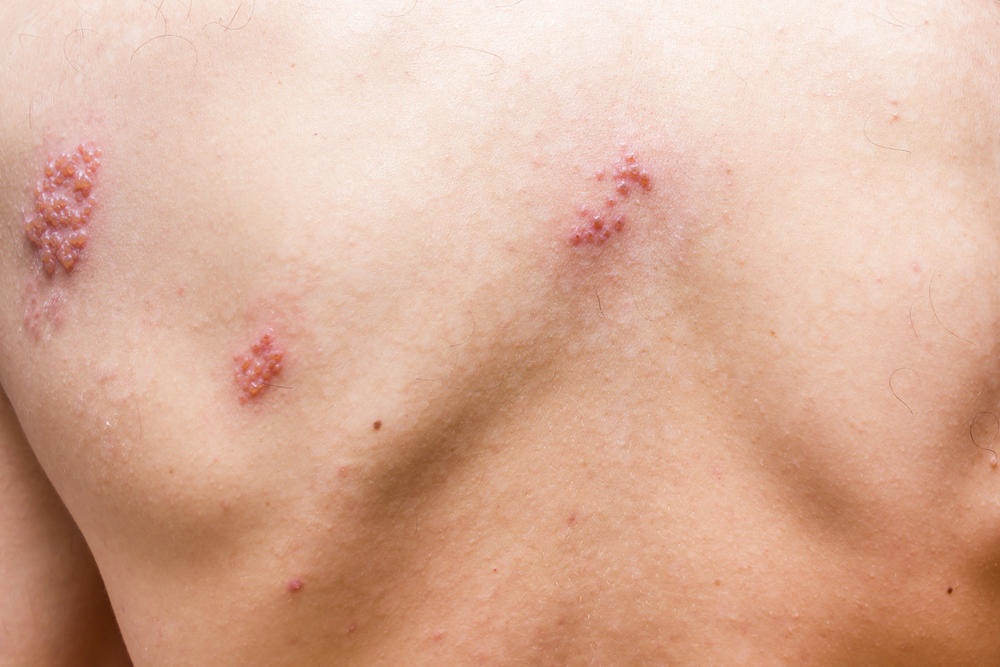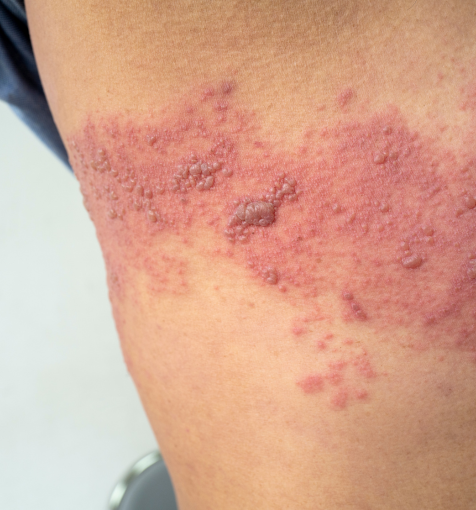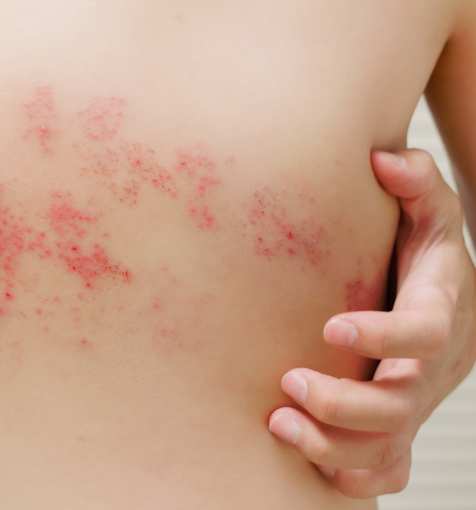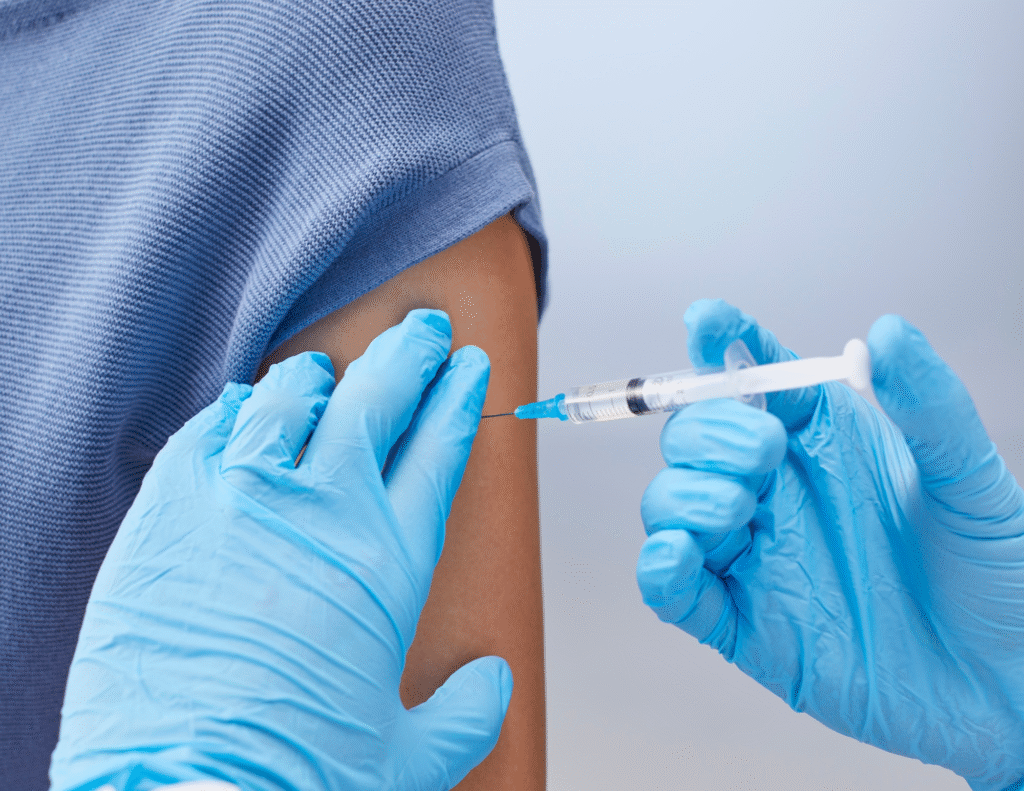Get Relief from Painful Rashes in New Jersey
Shingles is a viral infection caused by the varicella-zoster virus, the same virus responsible for chickenpox. After a person recovers from chickenpox, the virus lies dormant in the body and can reactivate years later, leading to shingles. This condition most often affects adults over the age of 50, but anyone who has had chickenpox is at risk. At Skin & Laser Center of NJ, we provide expert care to relieve the painful symptoms of shingles and help patients recover comfortably.


Shingles occurs when the varicella-zoster virus reawakens in the nervous system. While the exact reason for reactivation is not always clear, certain factors can increase the risk, such as:
Advancing age, especially after age 50
A weakened immune system due to illness or medication
High levels of stress
Recent injury or health complications
When the virus becomes active again, it travels along nerve pathways, causing inflammation and resulting in a painful rash and blisters that typically appear on one side of the body.
The first signs of shingles often appear before the rash. Patients may notice burning, tingling, or itching in a specific area, usually on one side of the body. Within a few days, a rash of fluid-filled blisters develops in the same area. Common symptoms include:
Redness and clusters of blisters that crust and scab over
Pain, itching, or tingling at the site of the rash
Sensitivity to touch in the affected area
Fatigue, headache, or mild fever in some patients
Seek medical attention right away if you experience severe pain, a rash near the eyes, or difficulty breathing or swallowing. These may indicate a more serious complication.


Shingles is best managed with prompt treatment. Our providers may recommend:
Antiviral medications to shorten the duration of the outbreak and reduce its severity
Pain relief therapies, including topical creams or oral medications, to ease discomfort
Soothing skin care measures to help blisters heal and prevent infection
Preventive shingles vaccine for eligible patients to reduce the risk of future outbreaks
With timely care, most patients see their symptoms improve within two to three weeks. However, in some cases, shingles can lead to lasting nerve pain, known as postherpetic neuralgia. Early treatment is key to lowering this risk.
Learn More About Shingles
Shingles treatment at Skin & Laser Center of NJ begins with a formal diagnosis. To diagnose shingles, your provider will request your detailed medical history and examine the affected skin. If there is any doubt, we may scrape a blister to get a sample. The sample will be examined under a microscope. We may also send the fluid from a blister to a laboratory for testing.
Without treatment, the rash caused by shingles clears within a few weeks. However, we strongly recommend seeking treatment. Without medical intervention, patients may experience pain, numbness, itching, and tingling that can last for months or even years. Treatment options include pain relievers, oral antiviral medications that can decrease the duration of the rash and the pain, and oral steroids to lower swelling and improve the long-term pain.
Treatments for pain after the rash clears (post-herpetic neuralgia) include specific antidepressant medications, pain relievers, and anesthetic creams and patches.
If the virus is near or in your eye it will be suggested that you go to the hospital for intravenous treatment to prevent long term complications related to the eye infection. It’s important to note that antiviral medicine is most effective when started within three days of seeing the rash, so seeking treatment right away is recommended in order to get started as soon as possible.
Convenient walk in hours available below. No appointment needed! Accepting private insurance and medicare. No medicaid plans.
Learn more about medical treatments at New Jersey’s Skin & Laser Center of NJ. Call 201-500-7525 or contact us online to schedule a consultation.